Health funds have agreements with particular doctors and hospitals to cover:
- all of the gap, which are called ‘no-gap agreements’, or
- part of the gap, which are called ‘known-gap agreements’ (resulting in lower out-of-pocket costs, usually less than $500).
The CHOICE gap rating takes into account the percentage of services where members either paid no gap or a known gap, compared to the state average.
When we score policies we give each fund a complaints rating based on the number of complaints and serious disputes the Ombudsman deals with.
We take into account the size of the fund, so big funds don’t get automatically penalised for having more complaints. The ratings are Low, Medium and High. A low rating is better than a high rating – it means the fund has fewer complaints and fewer serious disputes for its size.
The ratings are updated each quarter.
The Australian health insurance marketplace is highly concentrated, and despite there being more than 40 insurers, many people are only familiar with the names of a few.
And it’s no wonder – about eight in 10 health insurance policies belong to the five biggest health funds. Medibank and Bupa dominate with more than half of the health insurance market share between them:
- Medibank (including AHM) – 26.7%
- Bupa – 25.4%
- HCF – 12.6%
- NIB – 9.7%
- HBF – 8.1% (the large majority of HBF members are based in Western Australia).
But are big health funds actually better than small funds? It depends. The biggest health funds have some bad value policies, but we recommend some of their other policies.
On the other hand, some small funds have a market share of less than 0.5%, but they can still be very competitive and give you great cover at cheap premiums.
Bupa, HBF, HCF, Medibank and NIB: Good and bad points
Narrow down your health insurance options by comparing the pros and cons of the big five health funds.
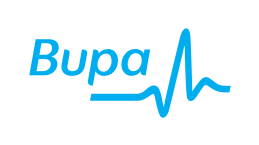
Bupa
Good points
- Complaints rating: Medium.
- Out-of-pocket rating: above average in Queensland and Victoria.
- No excess for children on most hospital and combined policies.
- Free cover for full-time students younger than 32 on family policies.
- Extended family cover for families with adult children younger than 32.
- Discounts for people joining who are under 30.
Bad points
- No direct debit or prepayment discounts.
- 2025 premium increase above the industry average at 5.1%.
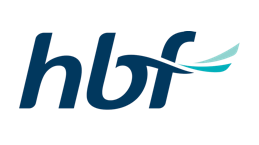
HBF
Good points
- Nonprofit.
- Complaints rating: Medium.
- Out-of-pocket rating: above average in Australian Capital Territory, Northern Territory, Queensland and Western Australia.
- No excess for children on hospital and combined policies.
- Adult children younger than 25 are covered on family policies for free if they’re full-time students or earning up to $24,500 per year.
- Direct debit and prepayment discounts available.
- Ability to prepay and lock in premiums for 18 months.
- 2025 premium increase below the industry average at 2.83%.
Bad points
- No discounts for people joining who are under 30.
- No extended family policies.
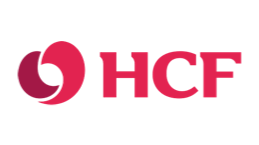
HCF
Good points
- Nonprofit.
- Complaints rating: Medium.
- No excess for children on most hospital and combined policies.
- Free cover for full-time students younger than 31 on family policies.
- Extended family policies for families with other adult children younger than 31.
- Ability to prepay and lock in premiums for 18 months.
- No direct debit or prepayment discounts.
- No discounts for people joining who are under 30.
- Out-of-pocket rating: below average in Northern Territory and Western Australia.
- 2025 premium increase above the industry average at 4.95%.
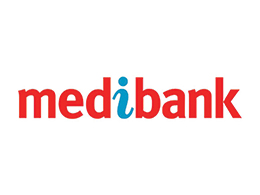
Medibank
Good points
- Complaints rating: Medium.
- No excess for children on most hospital and combined policies.
- Free cover for full-time students younger than 31 on family policies.
- Extended family policies for families with other adult children younger than 31.
- Discounts for people joining who are under 30.
Bad points
- No direct debit or prepayment discounts.
- Out-of-pocket rating: below average in New South Wales, South Australia, Victoria and Queensland; well below average in Western Australia.
- 2025 premium increase above the industry average at 3.99%.
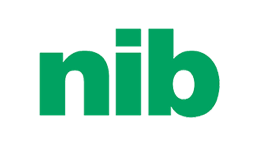
NIB
Good points
- Complaints rating: Medium.
- Free cover for full-time students younger than 31 on family policies.
- Extended family policies for families with other adult children younger than 31.
- Discounts for people joining who are under 30.
- Direct debit discounts.
Bad points
- Out-of-pocket rating: below average in the Australian Capital Territory, Queensland and Victoria; well below average in Northern Territory.
- No prepayment discounts.
- 2025 premium increase above industry average at 5.79%.
None of the big funds rate well for complaints
All of the big five funds are rated Medium for complaints at the moment. Only Hunter Health, Onemedifund and Mildura and Westfund are rating Low right now.
The complaints rating is based on complaints lodged with the Private Health Insurance Ombudsman. Want to see how other health funds fare beyond the big five? Check out our round up of small funds.
Health funds have agreements with particular doctors and hospitals to cover:
- all of the gap, which are called ‘no-gap agreements’, or
- part of the gap, which are called ‘known-gap agreements’ (resulting in lower out-of-pocket costs, usually less than $500).
The CHOICE gap rating takes into account the percentage of services where members either paid no gap or a known gap, compared to the state average.
When we score policies we give each fund a complaints rating based on the number of complaints and serious disputes the Ombudsman deals with.
We take into account the size of the fund, so big funds don’t get automatically penalised for having more complaints. The ratings are Low, Medium and High. A low rating is better than a high rating – it means the fund has fewer complaints and fewer serious disputes for its size.
The ratings are updated each quarter.
Best funds for low out-of-pocket costs
Bupa and HBF are the best funds when it comes to low out-of-pocket costs as they offer at least average gap protection in all states and above average protection in one or more states. The other funds have below average or worse gap protection in some states.
We rate health funds for how likely they are to leave you ‘out of pocket’ for treatments, and we call this their ‘gap rating’ – the higher a fund’s gap rating, the better it is.
Gap (out-of-pocket costs) ratings are calculated on a state and territory basis.
Bupa
- Above average in Queensland and Victoria.
- Average everywhere else.
HBF
- Above average in Australian Capital Territory, Northern Territory, Queensland and Western Australia.
- Average everywhere else.
HCF
- Average in Australian Capital Territory, New South Wales, Queensland, South Australia, Tasmania and Victoria.
Below average in Northern Territory and Western Australia.
Medibank
- Average in Australian Capital Territory, Northern Territory and Tasmania.
- Below average in New South Wales, Queensland, South Australia and Victoria.
- Well below average in Western Australia.
NIB
- Average in New South Wales, South Australia, Tasmania and Western Australia.
- Below average in Australian Capital Territory, Queensland and Victoria.
- Well below average in Northern Territory.
These ratings are based on the percentage of procedures in hospitals where members of the fund paid out-of-pocket costs (the gap payment).
Health funds have agreements with particular doctors and hospitals to cover:
- all of the gap, which are called ‘no-gap agreements’, or
- part of the gap, which are called ‘known-gap agreements’ (resulting in lower out-of-pocket costs, usually less than $500).
The CHOICE gap rating takes into account the percentage of services where members either paid no gap or a known gap, compared to the state average.
When we score policies we give each fund a complaints rating based on the number of complaints and serious disputes the Ombudsman deals with.
We take into account the size of the fund, so big funds don’t get automatically penalised for having more complaints. The ratings are Low, Medium and High. A low rating is better than a high rating – it means the fund has fewer complaints and fewer serious disputes for its size.
The ratings are updated each quarter.
Best funds for discounts
Direct debit and prepayment discounts
All health funds let you prepay your annual premium before 1 April each year to avoid the premium increase (until the following year).
HBF and NIB also offer a 4% discount if you pay by direct deposit, while HBF offers an additional 3.83% discount for prepaying your annual premium on some policies (giving you a possible total of 7.84% off).
Corporate discounts
All the big funds have discount agreements with companies or organisations such as super funds, associations and clubs or banks.
Be sure to ask your health fund what discounts they offer, as you may qualify for one without knowing it.
Discounts for students
Families pay the same premiums as couples, which means kids are insured for free.
And in 2021, the government increased the age cap for adult children on their parents’ policy from 24 to 31. At the same time, the age limit was removed for dependants living with disability (NDIS participants).
While children and full-time students up to age 31 can often stay on the regular family policy for free, there would usually be an additional cost to keep older dependants and non-students covered – depending on the insurer, this can add up to 30% to your premium.
The changes are not mandatory for private health funds and health insurers can also set different age limits, so while one fund may allow young adults on family policies up to age 28, another may allow them up to their 32nd birthday.
It probably makes sense to keep adult children on your policy while there’s no extra cost
There are usually conditions on this, for example, your children cannot be married or in a de facto relationship, they may have to be financially dependent on you and there are restrictions on how much income they can receive.
It probably makes sense to keep adult children on your policy while there’s no extra cost, but once you have to pay more, it’s time to consider if their needs are actually the same as yours.
You may want a Silver, Silver Plus or Gold policy, but for your adult children a Bronze policy, an extras-only policy or no health insurance at all might be more suitable at this stage of their life.

Discounts for people aged 18 to 30
Medibank, Bupa and NIB are offering discounts to new customers who sign up before they turn 30.
You can get 2% off your premium for every year you’re below 30, up to a maximum of 10% for people aged 18–25. If you stay on that policy, you’ll keep getting the full discount until you turn 41.
All three funds let you keep the discount if you switch cover or if you currently hold a discount with another fund and switch to them.
Which big health funds are nonprofit?
HBF and HCF are the only large health funds that are nonprofit.
Medibank and NIB are listed on the stock exchange and pay dividends to their shareholders. Bupa is for-profit but it’s part of the international Bupa Group that is nonprofit.
Nonprofit versus for-profit health funds
HBF is nonprofit
HCF is nonprofit
Bupa is for profit
Medibank is for profit
NIB is for profit.
